Bridges of Romincka Forest
Several roads and railways passed through the territory of the Romincka Forest . Due to the rugged terrain and the presence of numerous rivers and streams, bridges had to be built in some places. In addition to the famous Deer Bridge (Hirschbrücke), many bridges, large and not so large, were built across the Romincka (Red) River and its tributaries. Below is a story about some of them.
Heydenbrücke (Heyden Bridge)
A road bridge over the Rominte (Red) River. Built in 1905 by Windschild & Langelott from rammed concrete. The span is 25 m. Named after Wilhelm von Heyden-Cadow (1839-1920), who was Minister of Agriculture and Forestry of Prussia from 14 November 1890 to 3 December 1894.
The bridge was built in 1905.
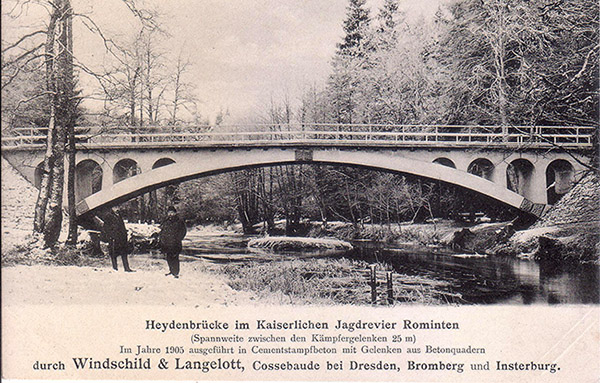
Dobawisbrücke
Almost a twin brother of the Heydenbrücke, built by the same construction company, only a year earlier. It was located on the road connecting Schittkemen (now Żytkiemy, Poland) and the Imperial Hunting Lodge in Rominten, in block 65. The bridge is currently located in a restricted area along the Russian-Polish border.
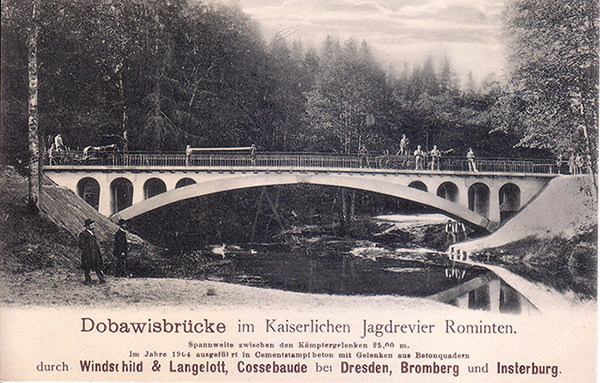
Kaiserbrücke
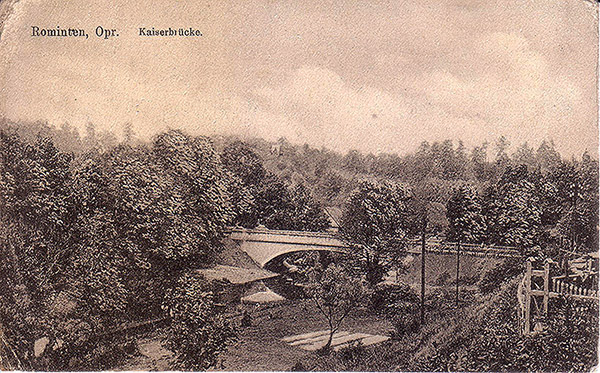
There is an interesting story behind this bridge. Firstly, there were two bridges with this name in the Romincka Forest. One of them existed on the site of the Heidenbrücke. It was wooden, in the Norwegian style, and decorated with a dragon's head in the center of the arch. It was built in the 1890s by sappers, when large-scale work was underway in the Forest to bring it to a divine appearance (laying roads, bridges, clearing the forest, etc.), so that it would be easier for Kaiser Wilhelm II to hunt.
Another bridge with the same name can be seen on some postcards (like the one above). The problem is that these postcards (for some unknown reason) do not show the Kaiserbrücke at all, but the very same Deer Bridge mentioned at the very beginning of the article.
Judge for yourself: the postcard below clearly shows that it depicts the Deer Bridge. Judging by the vegetation (although the printing method of the postcards does not indicate that they were issued at different times), it was issued slightly earlier than the postcard with the pseudo-Kaiserbrücke above.
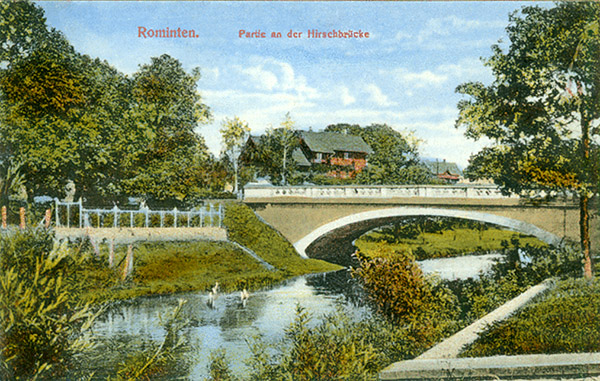
Another scam postcard:
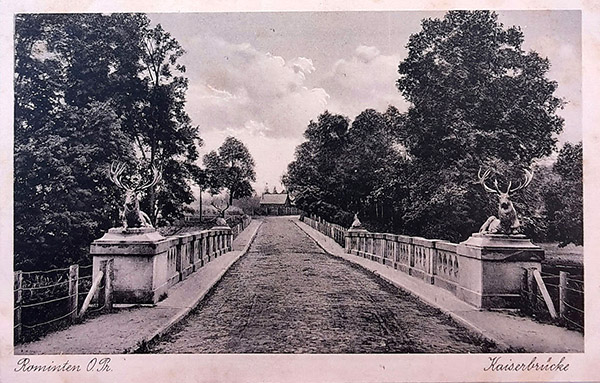
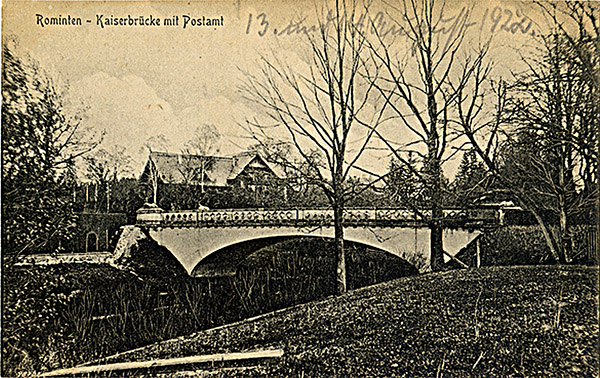
Although there were other versions of postcards with the Deer Bridge.
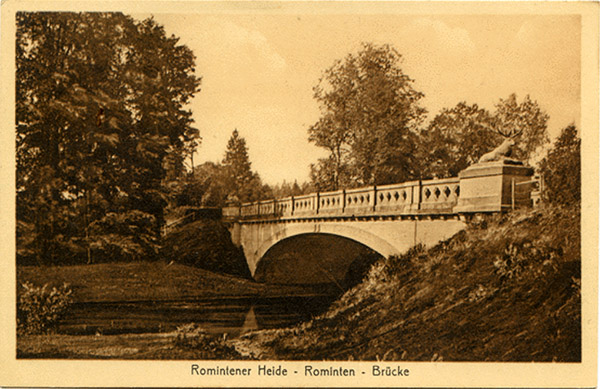
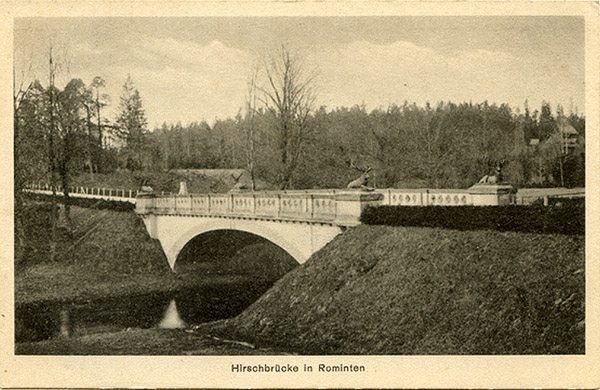
Let us repeat that the reason for this confusion with the name of the Deer Bridge is not very clear. As we can see, sometimes local, East Prussian publishers were more precise in their names than their colleagues from the West. And sometimes even publishers from Goldap (from which, even in those unhurried times, it was literally a stone's throw to the Pushcha) made mistakes. It can be assumed that some publishers printed postcards using existing photographs and captions. Now it is hardly possible to determine the publisher who first made a mistake in the name of the bridge. The Pushcha was as far away for the Germans as Kamchatka is for us now, and few could spot this mistake. In addition, the name "Hirschbrücke" is absent from topographic maps (1938 and 1941 editions).
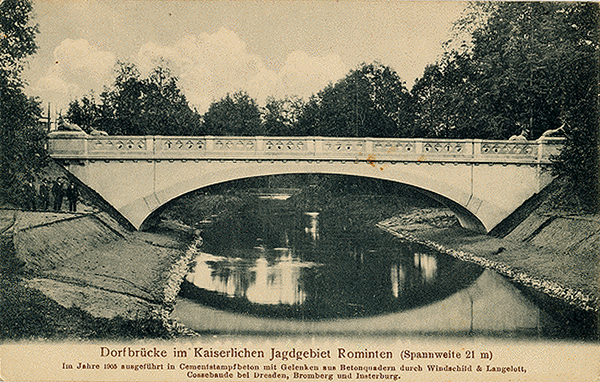
The real Kaiserbrücke was located one and a half kilometers southeast of the Hirschbrücke and a little southwest of the Dobawisbrücke, and was also built through Rominta. One source calls it an "ugly" structure with simple steel railings. The bridge is now on the Polish side near the border and is in a state of disrepair.
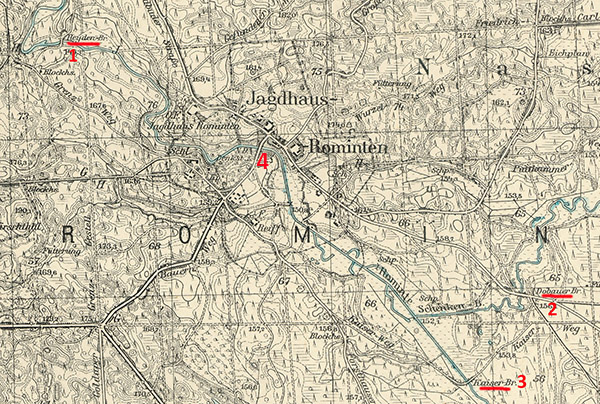
In conclusion, we would like to add that there are also certain doubts about Dobawisbrücke. As already mentioned, it is located in a restricted area and we are not aware of any photographs of it (except for the postcard above). In addition, the name "Dobawis" is only on that postcard. Literary sources indicate that it was originally called Dobawerbrücke, and in 1938 it was renamed Dobauerbrücke.
Adding intrigue to this story is a postcard depicting another bridge from the Windschild & Langelott company.
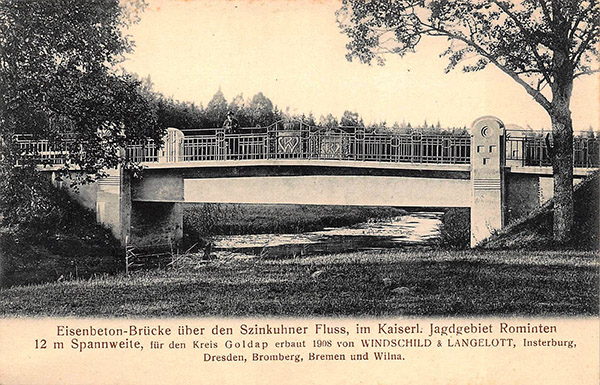
There is reason to believe that this bridge is the Dobawerbrücke. And the New Bridge (Neuebrücke), located a couple of kilometers downstream from the Heidenbrücke, is called the Dobawisbrücke. But this version requires verification.
